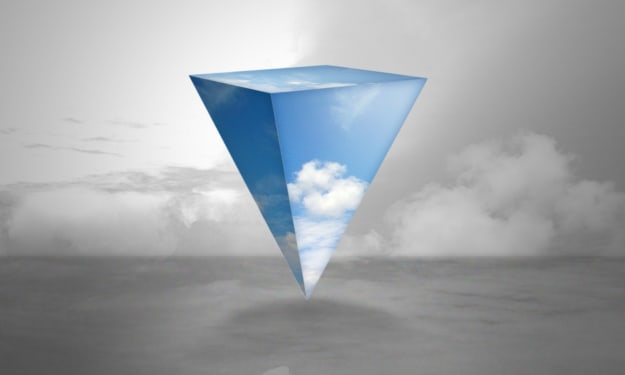MOON CRYSTAL: THE QUEST FOR LIMITLESS ENERGY
Unearthing Lunar Treasures

In the annals of scientific exploration, a recent Chinese lunar mission has illuminated an intriguing chapter. Deep within the Moon's barren landscape, a peculiar discovery was made – an extraordinary crystal harboring an element with the potential to revolutionize our energy landscape. Let us embark on a journey to unravel this captivating tale.
For decades, the Moon has been a source of fascination and wonder, an enigmatic celestial body shrouded in mystery since the Apollo missions of the 20th century. Our visits to the lunar surface have been sparse, with scant opportunities to delve into its secrets. However, a ray of hope emerged in December 2020, as Chinese scientists launched the Chang'e 5 probe on a mission to the Moon's near side, aptly named after the ancient Chinese moon deity.
After meticulously scouring the lunar surface, collecting approximately four pounds of diverse lunar rocks – including solidified lava known as Basalt – the probe returned to Earth. Though seemingly modest, this achievement marked a significant milestone, as no lunar samples had graced our planet since 1976. These precious samples promised to unlock the lunar enigma, shedding light on the Moon's history and formation.
The prevailing theories about the Moon's origin were finally substantiated. It was revealed that eons ago, a dwarf planet, slightly smaller than Mars, collided with Earth. The cataclysmic impact propelled fragments into space, with some coalescing to form the Moon. Paradoxically, this cosmic collision, though cataclysmic, gifted Earth with its life-sustaining oceans.
Yet, amidst the revelations about the Moon's birth, a smaller but no less significant discovery emerged. Chinese scientists from the Beijing Research Institute stumbled upon a rare lunar crystal, an unassuming gem, roughly as thin as a human hair. While lunar crystals formed from volcanic activity are not entirely novel, this one held a unique secret. This crystal, now known as "chongosite" after the lunar deity, possesses a composition entirely alien to Earth. The International Mineralogical Association verified its uniqueness, marking it as the sixth previously undiscovered lunar mineral, and the first attributed to China.
This crystal, more than a billion years old, stands as a testament to the Moon's rich geological history and its potential to unravel the mysteries of our cosmic neighbor. However, the lunar surprises did not end there.
Hidden within this lunar treasure trove lay a substance of profound significance – helium-3. This unassuming element is anything but ordinary, as it fuels the very stars that adorn our night sky. Helium-3 plays a pivotal role in nuclear fusion, a process of unimaginable power that differs markedly from the conventional understanding of burning.
Nuclear fusion occurs when hydrogen atoms, under intense heat and pressure, transmute into helium and release staggering amounts of energy. The sun itself operates on this principle, harnessing the nuclear furnace within its core to sustain life on Earth. However, helium-3 offers a tantalizing prospect – a cleaner, more potent, and radiation-free source of energy.
While Earth possesses meager traces of helium-3, the Moon is awash with it. The relentless assault of solar winds over billions of years has saturated the lunar surface with this remarkable element. Just 25 tons of helium-3 could power the United States for an entire year, and the Moon's abundant reservoir, estimated at over a million tons, holds the promise of millennia of energy sustainability.
However, the path to harnessing this cosmic energy source remains an arduous journey. To tap into helium-3's potential, humanity must master the daunting challenges of achieving the requisite temperatures and pressures, akin to those within the sun. This demands the development of thermonuclear reactors, a formidable scientific and engineering undertaking that stands on the horizon of possibility.
While we are not yet equipped to unlock helium-3's boundless potential, its discovery on the Moon has ignited a global race for nuclear resources. China, having uncovered a new deposit on the lunar far side, is poised to play a prominent role in this burgeoning cosmic competition. With plans for another lunar mission in 2024, they aim to collect the first samples from this uncharted territory.
In essence, the lunar crystal and the abundance of helium-3 offer a tantalizing glimpse into the future of energy. Though formidable challenges loom, the promise of clean, safe, and virtually limitless power beckons. As humanity embarks on this quest, we may find ourselves on the cusp of a new era – one where the Moon becomes not just a celestial companion but a wellspring of energy to sustain our civilization for generations to come.
About the Creator
Jeremiah “Jeremy” SEAL
"Passionate storyteller 📖 | Finding my voice one word at a time 🎤 | Exploring life's adventures and sharing them with you 🌟 | #VocalMedia"






Comments (1)
Interesting Piece mate 👍